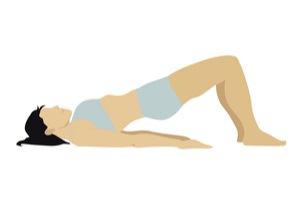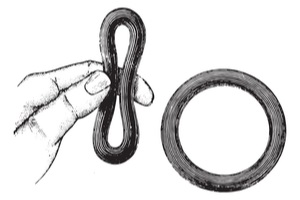If your doctor has suggested pelvic floor physical therapy, you probably have a lot of questions. Although this is a common and effective way of treating a host of problems, it isn’t something most people are familiar with if they haven’t needed it before. Here’s a look at what is involved in this treatment.
What Is the Pelvic Floor?

The pelvic floor is made up of the muscles that support the uterus, bowel,and bladder. When these muscles are too tight or too weak, they may cause chronic discomfort and pain for women during pelvic exams, sex, and tampon use.
Weak pelvic muscles can result in urine leaks and pelvic organ prolapse, which occurs when organs such as the uterus or cervix fall into the vagina. Some of the top causes of pelvic floor weakening are pregnancy, childbirth, and chronic constipation.
How Pelvic Floor Therapy Works
Pelvic floor therapy entails performing targeted exercises to help strengthen the pelvic floor muscles and keep them flexible. A pelvic floor therapist works with you to determine the root cause of your pelvic issues and develops a plan for easing symptoms and improving your overall pelvic health.
At your first session, the therapist will take your history, including your past medical and surgical history, any medications you are taking, and your gynecological and obstetric history. They will also carry out an orthopedic examination focusing on the lumbar spine, posture, hips, and gait. You may be asked to stand, walk, sit, or carry out certain movements so that the therapist can detect joint or posture issues that could be affecting the muscles in the pelvic floor.
Here are some of the conditions that may be improved with pelvic floor physical therapy.
- Painful sex
- Constipation
- Endometriosis
- Painful urination
- Urinary incontinence
- Pain in the pelvis, thighs, lower back, rectum, genitals, or abdomen
- Postpartum issues
A pelvic floor physical therapy treatment plan typically includes stretching or strengthening exercises, relaxation exercises, coordination exercises, and modalities such as heat, electrical stimulation, or ice. Biofeedback may be used for strengthening or relaxing pelvic floor muscles. In addition, your pelvic floor therapist will provide education on how to manage your condition and prevent it from worsening.
Some of the exercises that pelvic floor therapy may entail include:
Kegel Exercises

One common activity prescribed in pelvic floor therapy is Kegel exercises. These movements involve contracting and relaxing the muscles in the pelvic floor repeatedly. The movement is similar to the one you might make when you are trying to hold in or stop the flow of urine.
The general process involves tightening the muscles and holding them for up to five seconds before resting for a few seconds and repeating up to a total of 10 Kegels. A pelvic floor physical therapist can demonstrate how to perform this exercise correctly as it is important not to squeeze too hard. Women should work up to doing five sets of 10 Kegels every day to get the most benefits and increase pelvic muscle strength. These exercises can be performed very discreetly at any time.
Bridge Exercise
The bridge exercise is a movement aimed at boosting pelvic floor strength that is performed lying down flat on the ground with your feet on the floor and your knees bent. You then lift your buttocks several inches off of the floor, squeezing both your buttocks and your pelvic muscles tightly and holding the position for five to 10 seconds before releasing and resting your body on the ground. Your pelvic floor physical therapist will tell you how many bridge exercises you should perform daily.
Yoga
Practicing yoga is also beneficial to pelvic function. Many pelvic floor physical therapists recommend that women perform a daily regimen of yoga to keep their body strong and their muscles flexible, not only in the pelvic floor but throughout the body. Many yoga poses build core strength, including in the muscles that support the reproductive organs and bladder. Yoga also raises your blood circulation, which can reduce pain throughout the body and improve sexual function.
Squats

Squats are a very simple exercise that help to build strength in the pelvic muscles, buttocks, and hamstrings. They are performed standing upright with feet slightly wider than shoulder width. From this position, you simply bend at the knees and push your hips back like you are getting ready to sit in a chair, then stand up, and repeat the process again. For boosting pelvic and overall muscle strength, 15 squats per day are recommended.
Get in Touch With Raleigh Gynecology & Wellness
Pelvic floor physical therapy is generally very effective, and patients often report an improved quality of life after treatment. However, individual results vary depending on the condition being treated and its severity. To discuss your pelvic condition and treatment options, get in touch with the professional women’s healthcare team at Raleigh Gynecology & Wellness today.




 If your doctor has suggested
If your doctor has suggested  Kegels are a type of exercise that can
Kegels are a type of exercise that can 
 Following pelvic floor therapy, many women may be able to enjoy dramatic improvements in their quality of life, whether it means returning to a favorite sport, being able to start a family, or just getting through each day without experiencing incontinence.
Following pelvic floor therapy, many women may be able to enjoy dramatic improvements in their quality of life, whether it means returning to a favorite sport, being able to start a family, or just getting through each day without experiencing incontinence. Whether you have given birth via vaginal delivery or a C-section, your
Whether you have given birth via vaginal delivery or a C-section, your 
 A pelvic floor physical therapist will have specialized training in assessing and treating postpartum women who are experiencing all types of pelvic floor dysfunction. Even those who are not experiencing specific problems, such as urinary incontinence or pain, may still
A pelvic floor physical therapist will have specialized training in assessing and treating postpartum women who are experiencing all types of pelvic floor dysfunction. Even those who are not experiencing specific problems, such as urinary incontinence or pain, may still  If you are experiencing
If you are experiencing  The ring pessary is the most common type of support pessary because of its ability to fit a wide range of women and its suitability for all
The ring pessary is the most common type of support pessary because of its ability to fit a wide range of women and its suitability for all  Although pessaries are a safe and comfortable option for many women, it is important to be aware of the potential for mild side effects such as discharge, urinary tract infections, and vaginal irritation. The removable nature of pessaries means that side effects can usually be alleviated easily.
Although pessaries are a safe and comfortable option for many women, it is important to be aware of the potential for mild side effects such as discharge, urinary tract infections, and vaginal irritation. The removable nature of pessaries means that side effects can usually be alleviated easily.